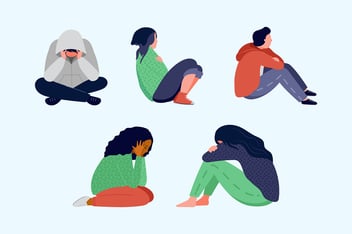Recognizing Symptoms of OCD in Children

Obsessive-compulsive disorder (OCD) impacts not only adults but also affects children and toddlers, albeit at a lower prevalence. Between 0.25% and 4% of children are known to develop OCD, with the average age of onset being around 10 years old. However, children as young as 5 years old can be diagnosed with the condition, and in rare instances, toddlers around the age of 3 may exhibit symptoms.
Understanding OCD in Toddlers and Children
OCD is characterized by persistent, intrusive thoughts (obsessions) and repetitive behaviors or rituals (compulsions) that the child feels compelled to perform. These symptoms can significantly interfere with the child's daily life and routines.
In the past, OCD was categorized as an anxiety disorder due to the significant anxiety produced by the obsessive thoughts and the compulsive behaviors aimed at alleviating this anxiety. However, the most recent edition of the Diagnostic and Statistical Manual of Mental Disorders (DSM-5) has reclassified OCD into a separate category known as "Obsessive-Compulsive and Related Disorders."
Gender Differences and Common Traits
Interestingly, childhood-onset OCD is more prevalent among boys than girls, but this trend reverses post-puberty. Boys with OCD are also at a higher risk of developing related conditions, such as tic disorders. Unlike adults with OCD, children may not recognize their obsessions as irrational, partly due to their developmental stage and limited verbal abilities. This can make diagnosing OCD in children more challenging than in adults.
Obsessions and Compulsions in Children
Obsessions in children often center around fears of harm coming to their parents, unlike the adult focus on themes like cleanliness or order. Compulsions may involve behaviors such as excessive handwashing, counting, or needing things to be done in a specific, symmetrical way. These compulsions are usually performed in an attempt to reduce the anxiety caused by their obsessions.
Causes of OCD in Children
The exact causes of OCD in children are complex and multifaceted, involving factors such as abnormalities in brain structure, genetics, early-life trauma, and stress. Some cases of sudden-onset OCD in children have been linked to an autoimmune response known as PANDAS, triggered by infections like strep throat.
Treatment for Childhood OCD
The treatment for OCD in children usually involves a combination of cognitive behavioral therapy (CBT), particularly exposure and response prevention therapy, and medication, such as selective serotonin reuptake inhibitors (SSRIs). Parental involvement in the therapy process is crucial for its success. In cases where OCD is caused by PANDAS, treatment might include antibiotics, intravenous immunoglobulin, or even a tonsillectomy.
Coping Strategies for Families
Families can support their child with OCD by learning as much as possible about the disorder, engaging in the treatment process, and seeking support from the community or support groups. Establishing a strong partnership with healthcare professionals and ensuring family members are involved and informed can be critical in managing the child's OCD effectively.
OCD in toddlers and children shares some similarities with adult OCD, but there are distinct differences, particularly in the nature of the obsessions and compulsions. Additionally, challenges in diagnosis and differences in treatment approaches further set apart OCD in children from its manifestation in adults.




